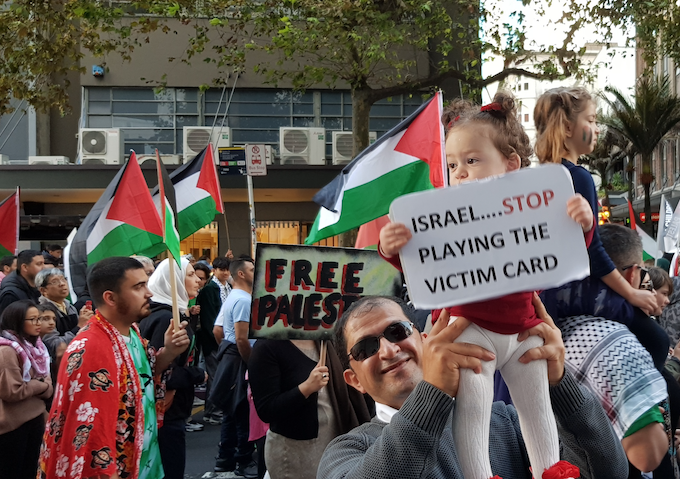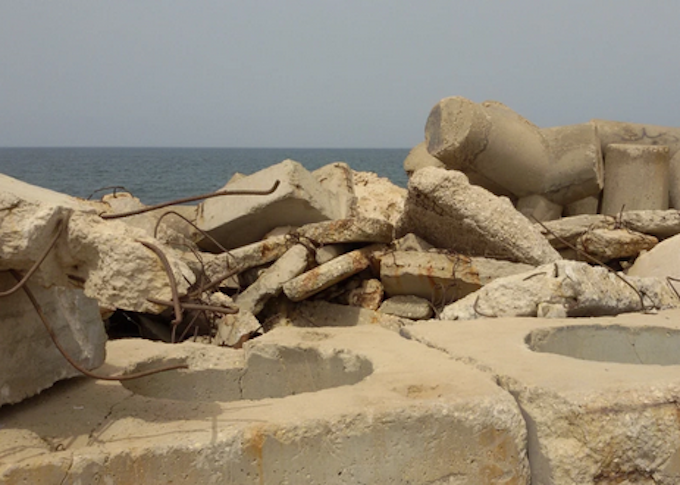
COMMENT: By Marilyn Garson in Wellington
I lived in Gaza from 2011, through the attack of 2014, and for one year after. I am not Palestinian, but some of the things I remember will be relevant in the coming months.
The bombardment was shattering. There followed a winter of soul-destroying neglect by donor states. Tens of thousands of Gazans remained in UNRWA shelter-schools. Many more families shivered in remnant housing, on tilting slabs of concrete, in rooms with three walls and a blanket hung in lieu of a fourth, persistently cold and wet.
Recovery? America sold Israel $1.9 billion in replacement arms. The World Bank assessed Israel’s bomb damage to Gaza at $4.4 billion. Of the $5.4 billion that donors pledged to reconstruct Gaza, in that critical first year the International Crisis Group calculated that the donor states actually came up with a paltry $340 million.
- READ MORE: Gallery: Free Palestine rally in Auckland rejects Israeli ‘genocide’ and ‘ethnic cleansing’
- Other Palestine reports
Aid is an insufficient place-holding response, but it is needed now. This time, it cannot happen the same way.
Having bombed, Israel is allowed to carry on the assault by slow strangulation.
In the workaday business of delivering the material needed to rebuild, the blockade allows Israel to choose the chokepoints of reconstruction. Having bombed, Israel is allowed to carry on the assault by slow strangulation.
In 2014 they were allowed to impose a farcical compliance regime for the cement that was needed to rebuild the 18,000 homes they had damaged or destroyed. UNRWA engineers were required to waste their days sitting next to concrete mixers.
International staff spent hours of each day driving between them to count — unbelievably — sacks of cement. 100,000 people were homeless and cement was permitted to reach them like grains of sand through an eye-dropper. Not a single home was built through the remainder of 2014.
Choking off the supplies
Perhaps this time Israel will choke off the supplies needed to re-pave the tens of thousands of square meters of road they have blown up; it will be something. We have watched an attack on the veins and arteries of modern civilian infrastructure.
If the crossings regime is allowed to remain in place, we will be leaving the Israeli government to decide unilaterally whether Gazans will be permitted to live in the modern world.
This time, it simply cannot go the same way.
I was as frightened by the way the bombs changed us. 1200 hours of incessant terror and violence had re-wired our brains. The lassitude, the thousand-yard-stares, the woman from Rafah who clutched her midsection as if she could hold her twelve lost relatives in place. I and my team of Gazan over-achievers struggled to finish any task on time.
Eight months later I found research on the anterior midcingulate cortex to help us understand how bombardment can alter the finishing brain. Every step seemed to be so steeply uphill.
Even more un-Gazan, we often struggled alone. The very essence of Gaza is its density. In its urban streets you know the passersby with smalltown frequency. Gaza coheres with the intentional social glue of resistance.
After the bombardment, people seemed to float alone with their memories. The human heart returns to the scene of unresolved trauma, and our hearts were stuck in many different rooms.
Good people suffering
The good people who listened and cared as professionals or as neighbours, were themselves suffering. Parents compared notes through those months: how many of their children still slept beneath their beds in case the planes came back?
Over everyone’s heads hung the knowledge that there had been no substantial agreement beyond a cessation of firing.
I felt I was watching people reach for each other, and for meaning. Young Gazan men stood for hours, waving Palestinian flags over the rubble of Shuja’iyya while residents crawled over the rubble landscape in search of something familiar. Bright pennants sprouted across the bombed-out windows of apartments.
Not everyone found meaning. Suicide and predatory behaviour also rose. Hamas cracked down on dissent violently, while more-radical groups made inroads among young people who may have felt they had no other agency.
The aftermath was all these things at once. When I left Gaza in late 2015, it felt poised between resuming and despairing. Since then, it has gone on for another six years. This bombardment picked up where the last one left off: in 2014 the destruction of apartment blocks was Israel’s final act and this time, it was their opening salvo.
This time, we cannot let it go the same way.
I had to learn to harness my sadness and outrage. If we are to make it different this time, we need to do that.

In the first weeks after the 2014 bombing, I could only rage at the blockade wall but the wall stood, undented. I didn’t know how to look further, and as a Jew I was afraid to look further. I began to read books on military accountability. Those principles helped to focus my gaze beyond the wall.
Now as then, we have witnessed a barbaric action, comprised of choices. Individuals are accountable for each of those choices. It is neither partisan nor, must I say it, antisemitic to call them to account ceaselessly.
Accountability takes the side of civilian protection. If one belligerent causes the overwhelming share of the wrongful death and damage, then that party has duly earned the overwhelming share of our attention. Call them out.
Loathe the wall but rage wisely at its structural supports: expedient politics, the arms trade that profits by field-testing its weapons on Gazan Palestinians, any denial of the simple equality of our lives, the hand-wringing or indifference of the bystander. Those hold the wall up.
Prior to this violence, Donald Trump had been busily normalising Israel’s diplomatic relations – good-bye to all that. Normalise BDS, not the occupation of Palestine. Apply sustained, peaceful, external pressure as you would to any other wound.
BDS firmly rejects an apartheid arrangement of power, until all people enjoy equality and self-determination.
Palestinians as a single nation
“See and reject the single system that classifies life ethnically between the river and the sea. When you recognise a single systemic wrong, you have recognised Palestinians as a single nation.
A statement by scholars of genocide, mass violence and human rights last week described the danger: “[T]he violence now has intensified systemic racism and exclusionary and violent nationalism in Israel—a well-known pattern in many cases of state violence—posing a serious risk for continued persecution and violence against Palestinians, exacerbated by the political instability in Israel in the last few months.”
In other words, this isn’t over and we will not let it go the same way.
The risk to Gaza now is the risk of our disengagement before we have brought down the walls. That is the task; nothing less. This time, Gaza must go free.
Marilyn Garson writes about Palestinian and Jewish dissent. This article was first published by Sh’ma Koleinu – Alternative Jewish Voices and is republished with permission. The original article can be read here.










































